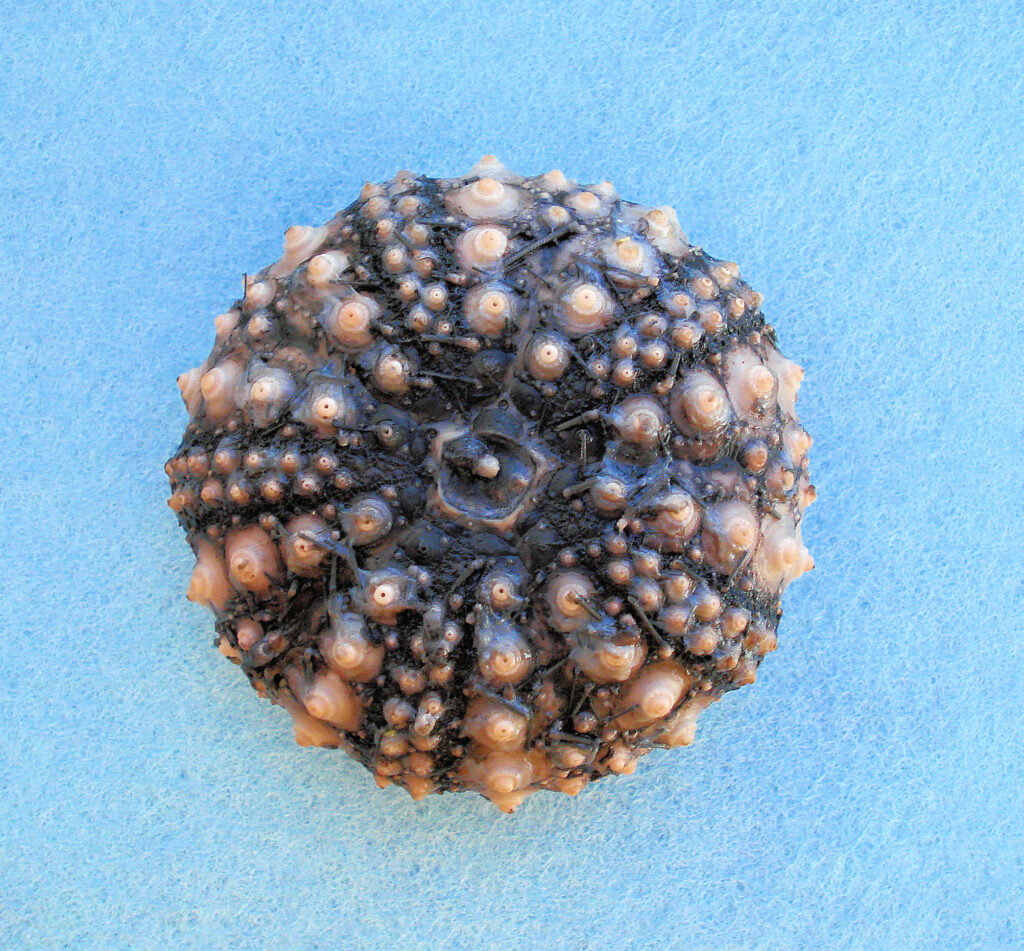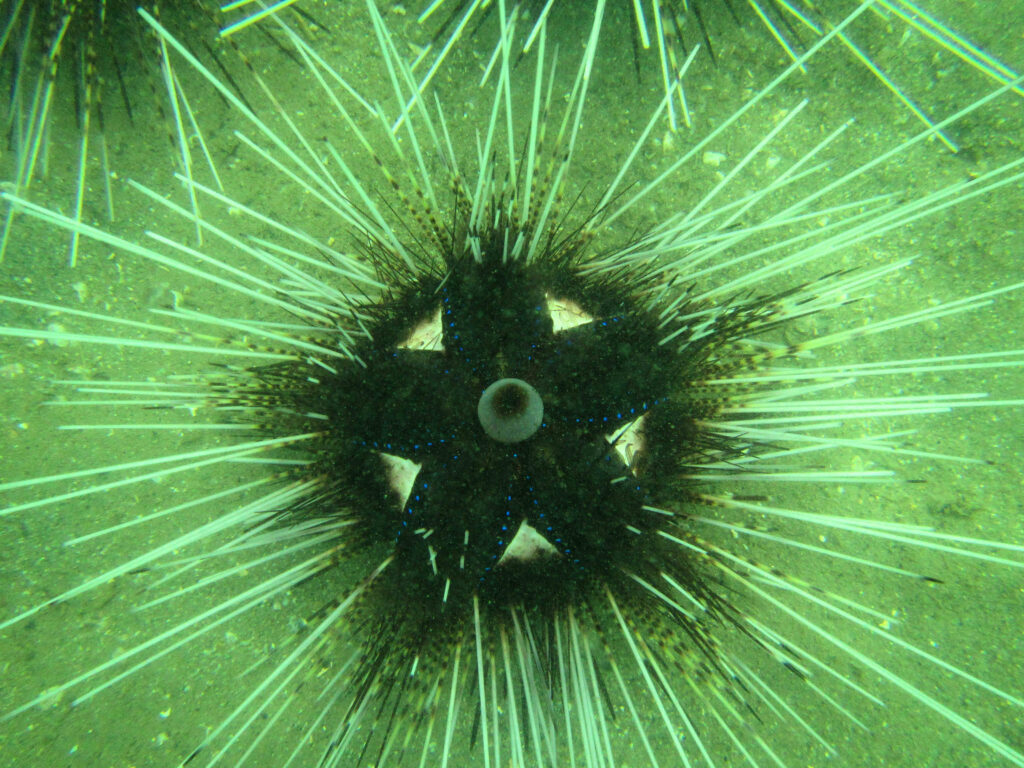Diadematiadae Family of Sea Urchins
Phylogeny: The Diadematiadae Sea Urchins are members of the Diadematiadae Family. Like Starfish and Sea Cucumbers they belong to the Phylum Echinodermata. They are in the Class Echinoidae and the the Order Diadematoida.Distributrion: Diadematiadae Sea Urchins are found worldwide, in temperate, tropical, and polar seas only in marine environments. There are thirty-one species in Diadematidae Family of which four are found along Mexico’s Pacific Coast. They are generally found on hard substrate from the intertidal zone to depths that exceed 5,000 m (16,400 feet).
Morphology: Diadematidae Sea Urchins have an internal skeleton (test) made of overlapping plates (ossicles) that is a globular shape that is covered with spiny skin. They are unsegmented and can be cucumber, disc, sphere or star in shape. They lack the arms of sea stars, but are covered by moveable spines that have tiny pincers (pedicellariae) between their long, hollow, brittle spines. In some species the spines and pedicellariae are venomous. Their mouth is located on the flat, or concave, underside; inside the mouth is a complex chewing apparatus, made of five jaws, that is known as an Aristotle’s Lantern. They have a water vascular system, tube feet, and a complete digestive system, but they lack a head, eyes, nervous system, or excretory system. They move by the use of tube feet and by moving their spines. They have light sensitive organs, enabling to point their spines toward a potential predator. Their larval stage has bilateral symmetry; the adult stage has 5-rayed radial symmetry. Their tests may reach a maximum diameter of 38 cm (15 inches). Sea Urchins in the Diadematidae Family may be black, blue, green, red or purple in color.
Ecosystem Roles: TheDiadematidae Sea Urchins are both herbivores or omnivores and they feed by scraping or chewing on a variety of foods including algae, bryozoans, carrion and detritus, sea grasses, and sessile animals. In turn they are preyed upon by shore birds, crabs, fish, marine mammals and sea stars.
Reproduction: Sea Urchins are either male or female and they reproduce sexually, with external fertilization.
A Word of Caution! Sea Urchins of the Diadematidae Family are not venomous, but should be handled with care because the spines are sharp, will break off in the skin, can be very painful to humans and are exceedingly difficult to remove.

